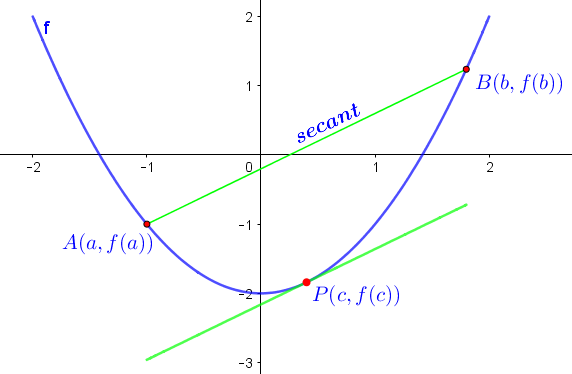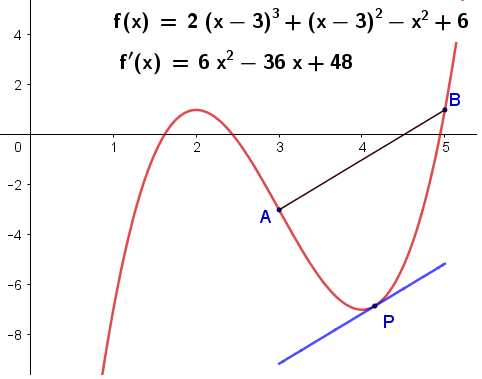Mean Value Theorem
Aside: There is no proof offered here. The proof is easy and easy to find online. If you are not already versed in derivatives, you may not find this very useful. Later, we are going to cite the mean value theorem in a discussion of arc lengths to justify replacing a slope with a derivative.
Theorem: If $f(x)$ is defined and continuous on the closed interval $[a,b]$ and differentiable on the open interval $(a,b)$, then at least one number, $P_{x}$, must exist on $(a,b)$ such that $$f^{\prime}(P_{x})=\frac{f(b)-f(a)}{b-a}.$$
Suppose we have two points, point $A(a,f(a)),$ and point $B(b,f(b)).$ These two points are in the $xy$ plane and they do not share the same $y$ value. If they did, then the secant between them would be vertical and not differentiable. So draw the secant line that connects the two points. It has a slope defined by $$m=\frac{f(b)-f(a)}{b-a}.$$

Next we can draw a curve between the two points. It can be nearly any curve, but to keep with the theorem, we will require it to be differentiable between $a$ and $b$. The theorem just says that somewhere on that curve, the tangent line will have exactly the same slope as our secant. That is, somewhere $f^{\prime}=m.$ The idea is shown graphically in fig. 1. $$\Delta y=f^{\prime}(x_{i})\cdot\Delta x \tag{1} \label{1}$$ From the theorem, we can find the point $(c,f(c))$ in figure 1. From $\eqref{1}$ and where $m$ is the slope of the secant line, $$f^{\prime}(c)=\frac{\Delta y}{\Delta x}\Longrightarrow\frac{dy}{dx}=m$$
